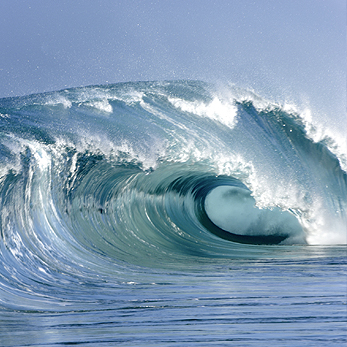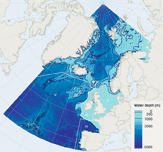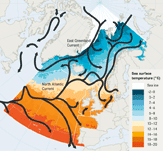Variations in the physical system affect the biology
The bathymetry of the seabed Figure 2.3 and the ocean circulation Figure 2.4 exert a strong control on the ecosystems of the OSPAR area, including the occurrence of species and habitats and their interactions. The distinction between waters that are mixed (where most conditions are the same from the surface to the seabed) and waters that are stratified (where conditions vary stepwise with depth) is important biologically, influencing the distribution of habitats as well as the structure of pelagic and benthic ecosystems. The areas where these water types meet (‘fronts’) are regions of intense biological activity and often provide productive fishing grounds.
Most of the North-East Atlantic is well-mixed to depths of up to 600 m during winter with a deep, permanent thermocline in deep oceanic waters. In spring, a strong vertical temperature gradient develops that separates warm surface water from cold deeper water. In shallow shelf areas strong tidal currents keep the water mixed throughout the year.
Local variations in temperature and circulation can be important in terms of the ecology of an area. The known range of these naturally occurring variations is now being exceeded, and this is a key factor in understanding how human-induced climate change is affecting marine ecosystems. For example, in the North Sea the monthly average sea surface temperature has exceeded the long-term average since the late 1980s. The rising temperatures have already affected the plankton and allowed new species to colonise Chapter 3.
Detailed information on the physical environment of the North-East Atlantic may be found in the previous quality status assessment, the QSR 2000.



